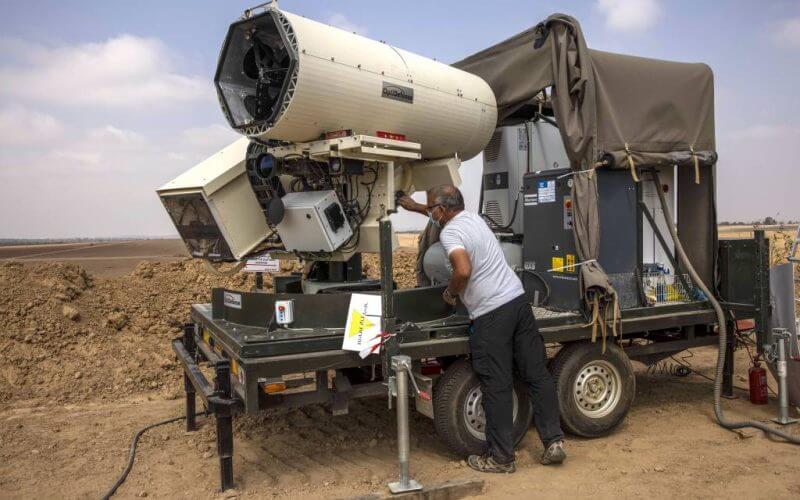Israeli Prime Minister Naftali Bennett took to Twitter to announce that Israel had successfully tested its newest laser interception system, Iron Beam. The Prime Minister stated that Israel's newest interception system is the world's first energy-based weapons system that uses a laser beam to shoot down missiles, rockets, drones, and mortar shells, costing only $3.50 per shot.
In the Prime Minister’s video post, the laser-based system intercepted a launched rocket, mortar shell, and a drone in an undisclosed location in the southern part of the Negev Desert last month. According to recent news reports, the Israeli Defense Ministry has been testing this new defense system for years and last year decided to shoot down a drone with it. The Israeli Defense Ministry’s research and development team explained that the new laser system is a game-changer that is easy to operate and is economically viable.
According to the Israeli Defense Ministry, what led to the creation of the Iron Beam was a general concern that Israel's military currently does not have sufficient interceptor missiles to shoot down incoming rockets, mortars, and drones.
When asked whether this new weapon system will replace the Iron Dome defense system or any of Israel's other aerial defenses, the Defense Ministry stated that this would not replace any aerial defense systems. Instead, the Iron Beam will aid Iron Dome and other aerial defense systems, shooting down smaller projectiles and leaving the larger ones for the more resilient missile-based batteries.
As terrorist organizations like Hamas in the Gaza Strip and Hezbollah in southern Lebanon receive free arms from the Islamic Republic of Iran, many analysts and researchers point out that Israel must develop newer military technology for its defense against such threats. When asked whether Israel should share this weapon with its Arab allies, Daniel Pipes, President of the Middle East Forum agreed. Pipes further stated that while terrorist organizations like Hezbollah receive around 130 missiles from Iran aimed at Israel from southern Lebanon, “the Iron Beam will help Israel shoot them down at a cheap price”.
In recent days, Hamas and the Palestinian Islamic Jihad have obtained thousands of rockets and mortar shells from Iran worrying many Israeli government officials who fear that these groups will launch a surprise attack. The Islamic Republic of Iran has continued its use of drone attacks in recent years, prompting the Prime Minister and his government to seriously consider and create new defense mechanisms like the Iron Beam against such aggression.
The soon-to-be-revived nuclear agreement between Tehran and Washington also played a crucial role in Israel’s creation of new defense technology like the Iron Beam.
If the nuclear agreement goes through and Tehran's economy experiences relief from international sanctions, the regime will be able to finance its military and purchase new and upgraded equipment. Iran's Revolutionary Guards Corps (IRGC) will have new military equipment to attack the state of Israel and its allies while also supplying terrorist proxies like Hamas and Hezbollah. As a result, Israel will continue to produce new weaponry like Iron Beam and improve its design, range, and compatibility against enemy fire.
From 1952 to 2020, Israel’s military expenditure has ranged around $19-$21 billion dollars, given the constant threats it faces. This new energy-based weapon system costs hundreds of millions of shekels and was allocated to the final development stages and trial phases. The Defense Ministry has decided to place the Iron Beam on the border with the Gaza Strip, where Israel faces serious threats from the Hamas terrorist group.
Like all weapons systems, the Iron Beam does have certain downsides. One of them includes being unable to function well during low invisibility instances, including heavy cloud cover or other bleak weather. As a result, the Defense Ministry indicated that it plans to mount the Iron Beam system on an airplane allowing it to correct this issue by putting the system above the clouds. However, the Defense Ministry indicated that this process takes time to resolve.










